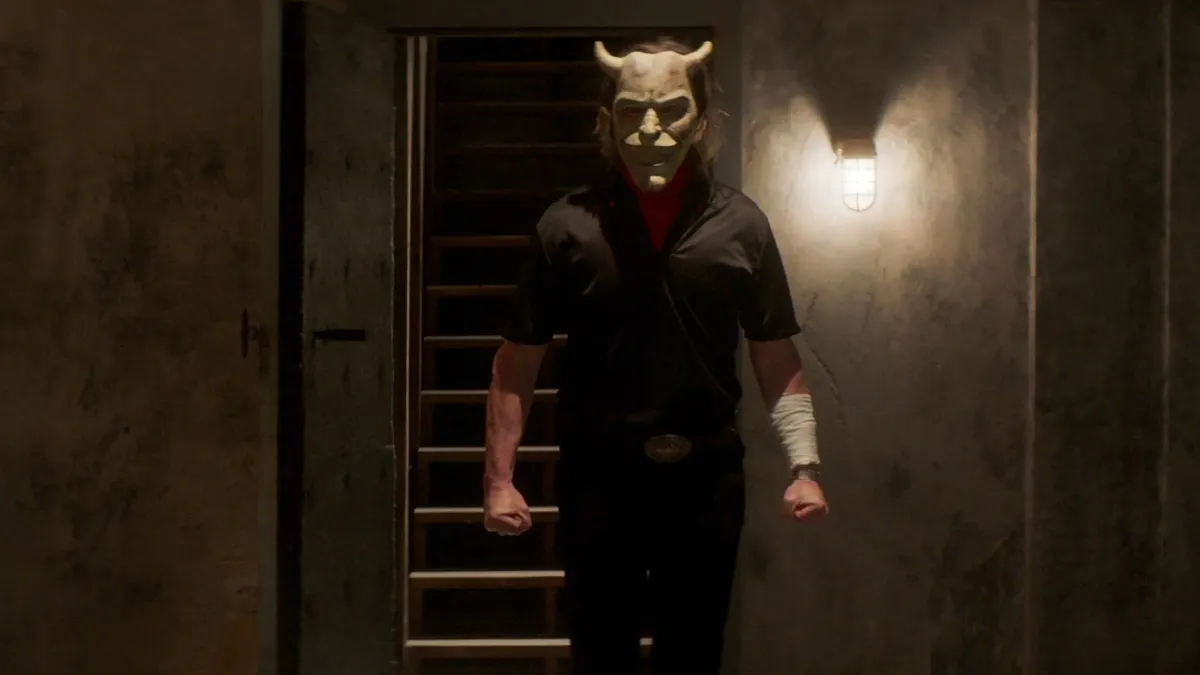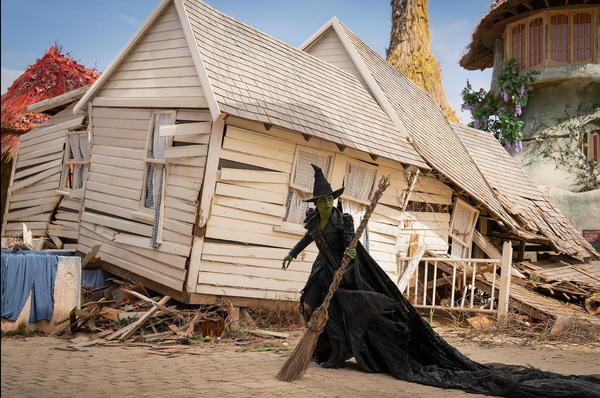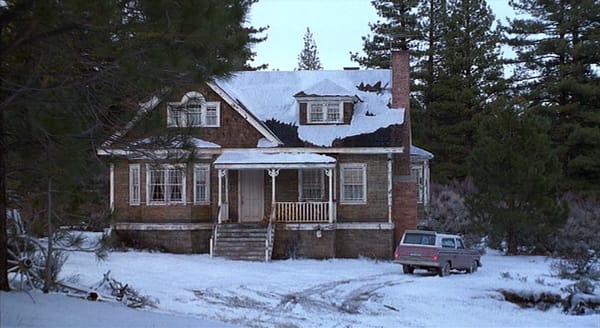The full horror of nostalgia
A wave of recent horror movies examines our cultural obsession with nostalgia — but not that closely

(Each week, I’m publishing a new pop culture essay from a freelancer. Remember: Your subscription fee helps me pay these freelancers for their efforts! This week: Steve Erickson on the recent wave of nostalgic horror and how it does or doesn't examine our obsession with the past.)
In 1978, the Buzzcocks’ Pete Shelley sang, “I’m surfing on a wave of nostalgia for an age yet to come.” Returning to that period in a 2014 interview, the late cultural theorist and critic Mark Fisher said, “It’s easy to say, ‘Oh, things were great in the 70s, let’s go back to the 70s,’ but I think the real issue is ‘What kind of future did we expect from the 70s?’ I mean, there was a trajectory, and this trajectory was interrupted.”
The narrative that history’s arc always leads towards progress, which may have looked justified in the ‘60s and ‘70s, is being proven wrong by this moment, where our future looks like climate change, increasing political repression and destruction of civil rights, and endless waves of disease. Sometimes, the turn toward nostalgia takes more benign forms. For instance, this summer, Kate Bush’s “Running Up That Hill” became a much bigger hit than it was during its original release, thanks to its use in Stranger Things’s fourth season. But even in those more benign cases, nostalgia takes the place of a search for forms of expression that can do justice to the present.
Top Gun: Maverick is one of the most popular films of 2022, a massive commercial and critical success. It’s far more respectable than the original Top Gun, which many critics wrote off as a military recruitment commercial in the style of a music video. They weren’t exactly wrong, but Top Gun: Maverick returns to the well of ‘70s and ‘80s rock music to turn The Who’s “meet the new boss, same as the old boss” (from “Won’t Get Fooled Again”) from a critique into a celebration of Tom Cruise’s star power and the franchise itself. The new music featured in the film pales in comparison. Cruise’s image of eternal youth and the impact of Top Gun’s popularity with people who saw it as a child or teen add up to something aspirational. While Cruise looks 20 years younger than his actual age, the film rolls out Val Kilmer, whose life has been ravaged by serious health problems, for a cautionary counter-example.
There are spaces where this trend toward nostalgia might be effectively critiqued and questioned. Horror films have become one of the few means of expressing new ideas in mainstream American cinema; while comedies and dramas have mostly vanished from our multiplexes, it’s still possible to reach a wide audience with a horror movie made for a few million dollars, as Get Out proved in 2017. Several recent horror films explore and entertain the seduction of nostalgia while also pondering exactly what we look for in it.

The Black Phone (2022) presents Denver in 1978 as a perpetually overcast hellscape. The opening scene, in which a boy plays baseball to an adoring crowd, conjures up images of Midwestern Americana only to dash them when he gets dragged into a van and kidnapped by a murderer known only as the Grabber (Ethan Hawke). The real protagonist turns out to be the baseball player’s classmate Finny (Mason Thomas), a teen who lives with his sister Gwen (Madeleine McGraw) and their abusive, alcoholic father, Terrence (Jeremy Davies.)
As in Hawke and director Scott Derrickson’s first team-up, 2012’s Sinister, antiquated technology is used as a source of terror. Sinister showed the audience Super-8 snuff films of murders committed by children under demonic influence. Those faux-snuff films were genuinely uncanny, much more so than any other element of the film. To lesser impact, the opening credits of The Black Phone imitate that style. This film’s equivalent of It’s Losers’ Club uses another piece of old technology: the landline.
As a whole, The Black Phone looks back on the ‘70s with a jaundiced eye. Its ideology isn’t especially coherent. The depiction of the Grabber buys into stranger danger and satanic panic narratives of the period. He wears a devil mask most of the time, even if he never claims to be a Satanist. As Paul M. Renfro and Danielle Wiggins argued in Slate, Hawke’s shaky, high-pitched voice, hand mannerisms, and some of his behavior towards Finny play into the stereotype of the serial killer as a queer pedophile.
Yet the movie isn’t exclusively peddling these stranger danger myths. The world outside the Grabber’s basement is only a bit less grim. Gwen’s dad whips her with a belt, while Finny gets attacked by homophobic bullies. The film acknowledges the fact that most child abuse is committed by adults who are close to their victims while presenting the police as all but useless at protecting kids. Even the period needle-drop of the Sweet’s exuberant “Fox on the Run” turns sour very quickly, as it leads into a scene of brutal violence. Pink Floyd’s far less joyous electronic instrumental “On the Run,” used soon after, is closer to The Black Phone’s spirit.
While the spirits of the Grabber’s victims eventually band together to help Finny fight back, we can never forget that they’re separated by time, place and even planes of existence. It’s no less detached and technology-dependent than contemporary teenagers trying to aid each other and find some form of community via Discord or Reddit, but crucially, the technology is analog. The period setting looks like a trap, whether Finny is at home or in the Grabber’s basement. The Grabber is just more honest about being a predatory scumbag than Terrence, and the ending can only offer tentative hope.

Ti West’s X (2022) begins with a porn film crew driving to a rural ranch where they plan a shoot. The land is owned by Pearl (Mia Goth, under very extensive makeup) and her husband Howard (Stephen Ure). Maxine (Mia Goth, not under very extensive makeup), Jackson Hole (Scott Mescudi) and Bobby-Lynne (Brittany Snow) will be performing it. But their shoot awakens the libido of Pearl, who first spends the day wandering about the property observing it. Unable to act on her desires, she resorts to murder instead.
X breaks the conventions of the slasher movie by killing off its most sexually conservative character first while letting a porn performer become the final girl. But her dreams of stardom and constant cocaine use seem likely to head towards a sadder fate than Pearl’s present-day life. Casting Goth as both Maxine and Pearl and editing the film to suggest the porn production scenes also function as Pearl’s fantasies both hint at the fate of baby boomers, who spent the ‘70s getting high and laid, only to find Tucker Carlson and Facebook more pressing addictions now.
X is one of the few recent pieces of American pop culture to let in the desperation lurking beneath our nostalgia. Ironically, its Easter eggs, which allude to John Carpenter’s Halloween, Lucio Fulci’s obsession with impaled eyeballs, and the lakeside dangers of Lewis Teague’s Alligator, hint at a period just before slasher movies helped destroy the horror movie’s critical reputation. Problematic faves like Cruising and Dressed To Kill, both released in 1980, turned out to be prophetic in their bleak view of sex, even if the films themselves were symptoms of a looming backlash against women and LGBTQ people. X has the benefit of time. It can see the flaws and ultimate failure of the porn crew’s countercultural hopes while suggesting we lost something when they went down in flames.
Malignant (2021), directed by James Wan, takes its reliance on references to earlier horror movies to the point of self-parody, right down to a score that sounds like an orchestra having a panic attack while playing Bernard Herrmann’s music from Psycho.
In their reviews, many critics described it as a Giallo, inspired by the atmosphere-over-narrative school of ‘70s Italian horror, but the only real connection is its bright blue and red lighting. In truth, Malignant lifts its entire premise from Frank Henenlotter’s 1982 film Basket Case, which depicts a young man whose conjoined twin was mangled in surgery and now commits murder. In an opening set in 1993, doctors attempt to control Gabriel, a violent patient at a research hotel with the supernatural ability to broadcast his menacing threats through technology (both analog and digital). After the credits, the film cuts to the present day, where Madison (Annabelle Wallis) develops mysterious visions of murder after her head is severely injured in an attack by her abusive husband. But even that helps conceal what the film is really about. On a far deeper level than The Black Phone, Malignant reflects the satanic panic. As much as body horror, this is a story about demonic possession, even though the film offers a biological excuse. It’s not even subtext; Madison calls Gabriel the devil.
Malignant’s (2021) batshit energy, distance from so-called “elevated horror,” and willingness to do anything for a thrill can be exciting, especially at its start. But the twists and spoilers of its final half-hour take it into very reactionary territory. It uses its references to old movies to conceal this shift.

For instance, Madison is caged in a jail cell with butch white women and a Pam Grier lookalike sporting a huge Afro. Possessed by Gabriel, Madison destroys the whole cell in a spectacularly gory fashion. Beneath the cartoonish parade of stereotypes from ‘70s exploitation films, this scene takes great excitement in massacring women coded as lesbian. To be fair, the politics aren’t quite coherent – the next scene takes even greater joy in killing off cops. But the ending repeatedly points out that Gabriel prevented Madison from giving birth by causing miscarriages. His control over her means he can take charge of her body to force an abortion, even if Madison doesn’t realize that’s the case at first. The anti-abortion overtones of lines like “I should have killed you before you were born” are blatant.
Instead of reflecting on Gabriel as an expression of Madison’s masculine side, given cultural permission to express her anger violently, the film tries to separate them into two different bodies. The ending, in which Madison firmly rejects the idea of male and female minds co-existing within her, even has a hint of transphobia, especially when Gabriel says, “I can use your body better than you.” The violence he commits while controlling her body in a women's prison acts out TERF rhetoric. Nostalgia becomes a thin veil of irony that distracts liberal spectators from noticing these sentiments or taking them seriously. We’re not far from Wan’s celebration of a pair of con artists who used Christianity to make their grift more successful in The Conjuring franchise.
When future generations look back on 2020s pop culture, what will they think about? Perhaps TikTok will seem as innovative as the high points of MTV in the ‘80s and ‘90s, but it’s impossible to miss the fact that we’re currently recycling franchises that are further back than The Best Years of Our Lives and Casablanca were in the ‘80s. At best, the horror movie is a living tradition building on the past, but all too often, we see imitations of imitations of imitations. Can the age of endless IP cope with the real terrors of our time? So far, the jury’s out.
Episodes is published twice per week. Mondays alternate between a free edition on various topics and a subscriber-supported edition where I recap TV shows of interest. Fridays offer pop culture thoughts from freelance writers. The Friday edition and the biweekly recaps are only available to subscribers. Suggest topics for future installments via email or on Twitter. Read more of my work at Vox.



